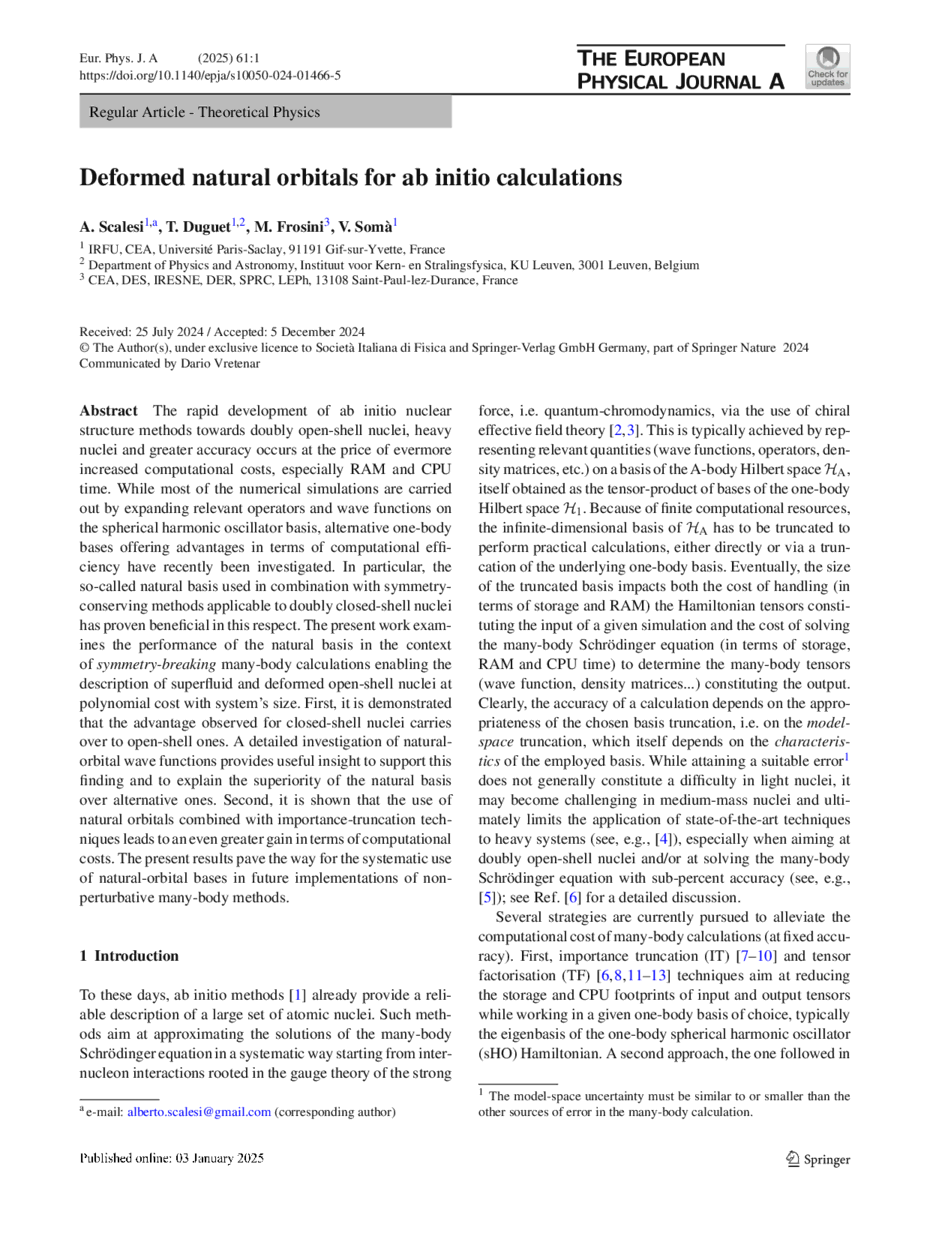https://doi.org/10.1140/epja/s10050-024-01466-5
Regular Article - Theoretical Physics
Deformed natural orbitals for ab initio calculations
1
IRFU, CEA, Université Paris-Saclay, 91191, Gif-sur-Yvette, France
2
Department of Physics and Astronomy, Instituut voor Kern- en Stralingsfysica, KU Leuven, 3001, Leuven, Belgium
3
CEA, DES, IRESNE, DER, SPRC, LEPh, 13108, Saint-Paul-lez-Durance, France
Received:
25
July
2024
Accepted:
5
December
2024
Published online:
3
January
2025
The rapid development of ab initio nuclear structure methods towards doubly open-shell nuclei, heavy nuclei and greater accuracy occurs at the price of evermore increased computational costs, especially RAM and CPU time. While most of the numerical simulations are carried out by expanding relevant operators and wave functions on the spherical harmonic oscillator basis, alternative one-body bases offering advantages in terms of computational efficiency have recently been investigated. In particular, the so-called natural basis used in combination with symmetry-conserving methods applicable to doubly closed-shell nuclei has proven beneficial in this respect. The present work examines the performance of the natural basis in the context of symmetry-breaking many-body calculations enabling the description of superfluid and deformed open-shell nuclei at polynomial cost with system’s size. First, it is demonstrated that the advantage observed for closed-shell nuclei carries over to open-shell ones. A detailed investigation of natural-orbital wave functions provides useful insight to support this finding and to explain the superiority of the natural basis over alternative ones. Second, it is shown that the use of natural orbitals combined with importance-truncation techniques leads to an even greater gain in terms of computational costs. The present results pave the way for the systematic use of natural-orbital bases in future implementations of non-perturbative many-body methods.
Copyright comment Springer Nature or its licensor (e.g. a society or other partner) holds exclusive rights to this article under a publishing agreement with the author(s) or other rightsholder(s); author self-archiving of the accepted manuscript version of this article is solely governed by the terms of such publishing agreement and applicable law.
© The Author(s), under exclusive licence to Società Italiana di Fisica and Springer-Verlag GmbH Germany, part of Springer Nature 2024
Springer Nature or its licensor (e.g. a society or other partner) holds exclusive rights to this article under a publishing agreement with the author(s) or other rightsholder(s); author self-archiving of the accepted manuscript version of this article is solely governed by the terms of such publishing agreement and applicable law.






